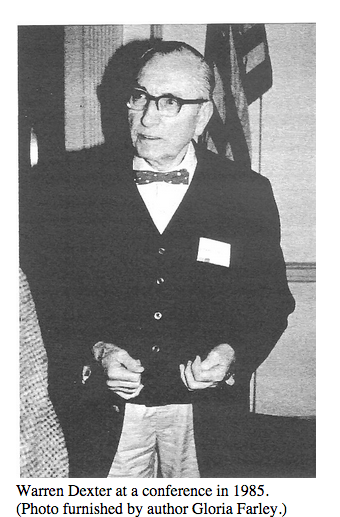by Warren W. Dexter, FES, DFFMES, Elkhart, Indiana
Originally published in The Midwestern Epigraphic Journal, Volume 17, Number 1, 2003
HODO or DOLMEN
Just west of the WRITING ON STONE PROVINCIAL PARK in southern Alberta, Canada is located a wonderfully positioned DOLMEN appearing like a lighthouse that can be observed for miles. It is high above the Milk River, named in 1805 by the Lewis and Clark expedition as they were passing up the Missouri River where the Milk River enters because of the coloring of the Milk River with sand sediment.
The DOLMEN was originally a HODO made into DOLMEN by fracturing a hole in the center of the base by humans. This can be observed from the up-stream side and shows that it is not an opening made from erosion. At the same time at the level just to the left we see what looks like three pillars. This is a carved form instead of an inscribed form of the name (B-L) of the ancient god BAAL in the ancient alphabet (vowelless) OGAM. There are only two places that I have found the name of the God BAAL in this alphabet engraved as on this Pillar (bar relief), the other being on Etruscan burial hut urns in western Italy.
This is one of the two reasons that I assume that this DOLMEN was purposely made as a memorial to the Canaanite God BAAL. The second reason is on a site about ten miles up stream on the Milk River, 65 ft. high above the river on a bluff stands the so-called OGAM PILLAR with two sculptured heads.
OGAM PILLAR
The Ogam Pillar site is located about 15 miles east of the town of Milk River in southern Alberta, Canada. It is on a bluff 65 feet above the MIlk River which arises on the eastern border of Glacier National Park in the state of Montana and flows north across the Canadian border then parallel to the border and reenters the United States to join the Missouri River in eastern Montana. It is 625 miles long.
This site has several different stories, and they are in TWO different forms. One is the ancient OGAM (vowelless) inscribed alphabet that tells the story of the flyway of the birds which is the philosophy of the ancient 6 to 4th century BC priests of the Etruscans of western Italy. This pillar is located on the flyway of the birds going north to their breeding grounds. “When the birds fly to the west of the pillar the omen is for wars and famines, but when the birds fly east of the pillar the omen is for good weather and huge crops.”
The second is in the form of sculpture. There are two (2) HEADS sculptured in different forms to portray not only different individuals but their cultures, and by positioning them one above the other showing their position of command. The head above the OGAM inscription is that of a person who looks like a Roman because of the large nose which the Romans inherited from the Etruscans, their predecessors in Italy. The second head at the extreme left is that of an African negro-type who quite possibly was the leader of the sailors who brought the expedition to this destination.
Vandals disfigured the head on top of the OGAM PILLAR so that when I photographed it on my return trip in 1998 it was unrecognizable. It seems that the local establishment and Indians want only their interpretation of history to be considered. They have even tried to exclude any further photography of sites in this area.
The two people in the photograph are (l-r) Ronald Bair and Lawrence Halmrest, local explorers from southern Alberta. The latter was my guide to this location. Sometime previously the Glenbow Museum & Archives in Calgary, Alberta hired three supposed specialists to evaluate the inscriptions along the Milk River which they did and wrote reports about their finds. It so happened that the two most important sites, the “DOLMEN” and the “OGAM PILLAR” were ignored.
REFERENCES
1. WW Dexter, Ogam Consaine and Tifinag Alphabets: Ancient Uses, Academy Press, Rutland, VT, 1984, 68p. See Milk River inscriptions on front cover.
2. WW Dexter and Donna Martin, America’s Ancient Stone Relics: Vermont’s Link to Bronze Age Mariners, Academy Books, Rutland, VT, 1995, 210p. The Milk River inscriptions are discussed on pp 35-40, 174-75.
3. WW Dexter, “Under Our Noses, Too Close to See!”, ESOP 23, 13-14 (1998).
4. WW Dexter, “Ancient America’s Rivers: Arteries of Exploration”, The Ancient American 8(52), 34-35 (2003).
5. WW Dexter, “Ancient Inscriptions in Montana”, The Ancient American 8(54), 3 (2003); an addenda appeared in Ancient American 8(56), 7 (2004).
6. HB Fell, “Celtic Augurs and Canada Geese”, ESOP 12, No. 296, pp 99-206 (1984).
For more information please visit here for our other article on this very important site, originally published in Ancient American Magazine.
Also, for more information on Mr. Dexter please visit here.





